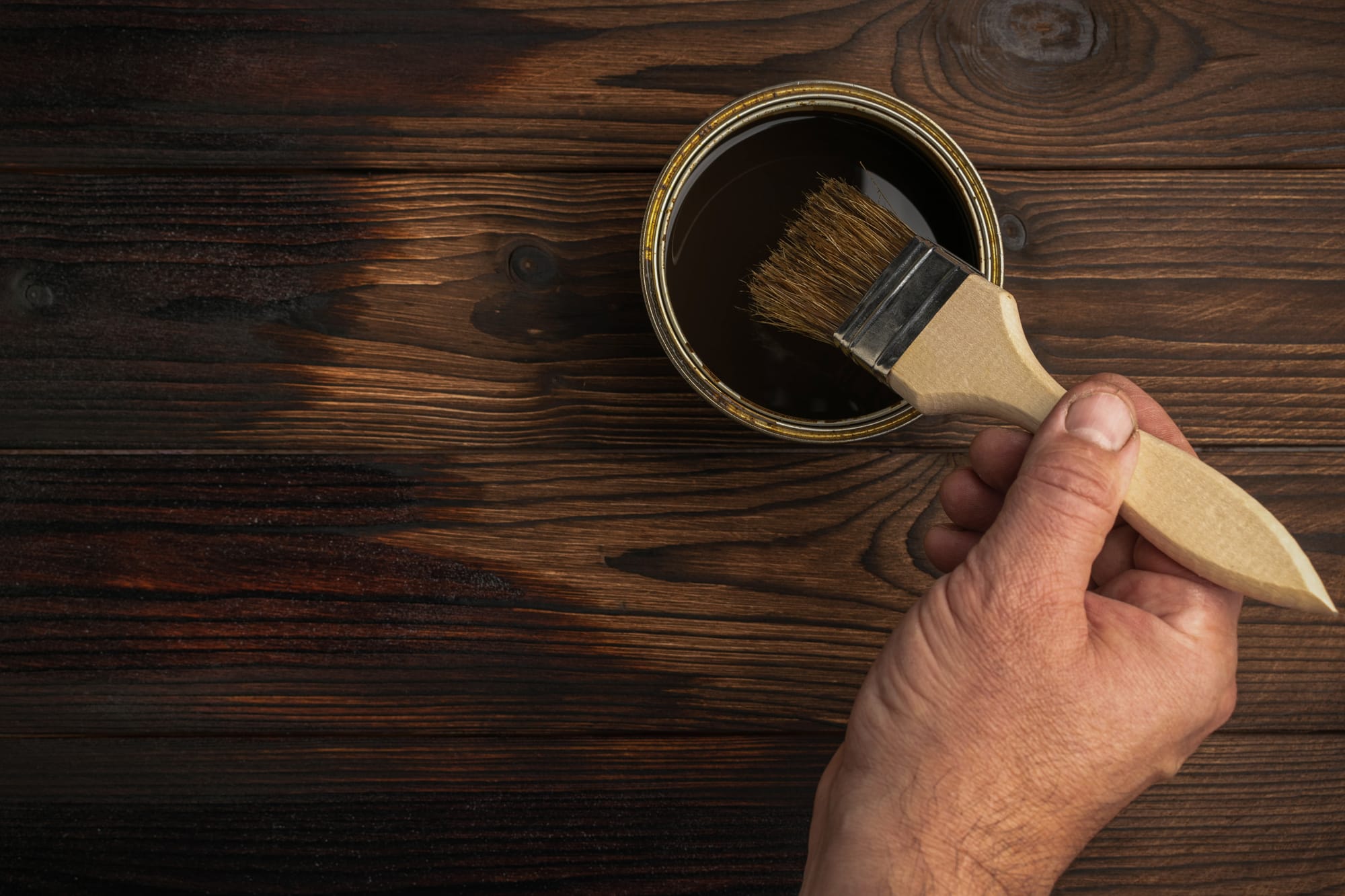Dark Wood Finishes

Key Features
- Expert insight into why dark wood finishes are trending.
- Practical tips for incorporating dark wood finishes in various spaces.
- Maintenance and care recommendations to preserve the finish.
The Comeback Trend in Modern Interiors
Dark wood finishes are back in style — and for good reason. Here’s why they’re trending and how to make them work in your home.
Why Are Dark Wood Finishes Making a Comeback?
Dark wood finishes are experiencing a major revival in modern interiors — and for good reason. Over the past decade, light and neutral tones have dominated the design world, but homeowners and designers are now leaning toward the warmth, depth, and sophistication that dark wood brings to a space.
Dark wood finishes have a timeless appeal that creates a sense of richness and luxury, whether you’re working with mahogany, walnut, or deep-stained oak. They're incredibly versatile, complementing both classic and contemporary styles. Plus, dark wood hides imperfections and adds contrast, giving a more dynamic and layered look to your home.
At Lightmen Painting, we’ve seen a surge in clients requesting dark wood finishes for their interiors. From cabinetry to flooring and accent walls, dark wood creates a striking effect that elevates any space. Let’s dive into why this trend is taking off and how you can incorporate it into your home.
Things to Know
- Dark wood finishes add warmth and elegance to any room.
- They pair well with neutral, jewel, and metallic tones.
- Proper care helps prevent fading and scratches.
- Dark wood flooring and cabinetry are popular choices in modern interiors.
- Lightmen Painting specializes in dark wood finishes.
What Makes Dark Wood Finishes Popular in Modern Interiors?
Dark wood finishes offer a few key benefits that make them popular among homeowners and interior designers alike:
1. Warmth and Depth
Dark wood tones add a natural warmth to any room, making even the most minimalistic spaces feel cozy and inviting. Unlike lighter woods, dark finishes create a sense of depth that enhances the character of the space.
2. Timeless Appeal
While trends come and go, dark wood finishes have a classic elegance that never goes out of style. Deep mahogany, espresso, and walnut finishes have been used in traditional design for centuries — and now they’re being rediscovered in modern settings.
3. Design Versatility
Dark wood pairs well with a wide range of color palettes and design styles. It works beautifully with neutral tones, jewel hues, and metallic accents. You can create a moody, dramatic vibe or balance it with lighter textures for a modern contrast.
How to Incorporate Dark Wood Finishes in Your Home
If you’re thinking about bringing dark wood finishes into your home, here are some practical ways to make it work:
Flooring
- Dark hardwood floors like walnut and oak create a strong foundation for any room.
- Pair dark floors with light-colored walls and furniture to balance the look.
- Opt for a matte or satin finish for a modern feel.
Cabinetry and Furniture
- Deep-stained cabinets in the kitchen or bathroom create a rich, luxurious feel.
- Try dark wood shelving in a study or living room to add warmth and character.
Wall Treatments and Accents
- Dark wood paneling or shiplap creates a cozy, sophisticated backdrop.
- Floating dark wood shelves can add contrast to light-colored walls.
Pros and Cons of Dark Wood Finishes
Here’s a quick breakdown of the advantages and potential drawbacks of dark wood finishes:
| Pros | Cons |
|---|---|
| Timeless and elegant look | Can make small rooms feel smaller if not balanced with light tones |
| Hides dirt and imperfections better than lighter woods | Dust and scratches can be more visible on very dark finishes |
| Pairs well with a wide range of design styles | Requires regular maintenance to prevent fading and wear |
| Adds warmth and richness to a space | Can darken a room without proper lighting |
What Colors Go Best with Dark Wood Finishes?
To get the most out of dark wood finishes, it’s important to pair them with the right colors and textures:
- Neutral Tones: White, cream, and beige create a balanced contrast.
- Jewel Tones: Deep green, navy blue, and burgundy enhance the richness of dark wood.
- Metallic Accents: Brass, gold, and copper bring out the warmth of dark wood.
- Earthy Hues: Olive green, rust, and terracotta complement the natural tones of wood.
Tips for Maintaining Dark Wood Finishes
Dark wood finishes can stay beautiful for years with the right care:
- Use Soft Cloths: Avoid abrasive cleaning materials that can scratch the surface.
- Avoid Direct Sunlight: Prolonged exposure can cause fading and discoloration.
- Polish Regularly: A natural wood polish helps maintain the finish’s shine.
- Clean Spills Immediately: Dark wood can absorb moisture quickly, leading to stains.
In Our Experience
"Dark wood finishes are one of the most requested upgrades we see at Lightmen Painting. Clients are drawn to the richness and depth that dark wood brings to a space. It’s a versatile design element that enhances both traditional and modern styles — and when applied correctly, it creates a high-end, polished look."
Why Dark Wood Finishes Are Worth the Investment
Dark wood finishes may require a bit more care than lighter tones, but the payoff is worth it. The depth, warmth, and sophistication that dark wood brings to a space are unmatched. It’s a design choice that stands the test of time — adding value and elegance to your home for years to come.At Lightmen Painting, we specialize in professional wood finishing and staining. If you’re considering adding dark wood finishes to your home, we’d be happy to help you achieve the perfect look.
Do You Have Questions? Give Us A Call With Any & All! 503-389-5758
-
People Also Ask:
What are the main differences between acrylic and latex paint?
Acrylic paint is known for its durability and flexibility, making it suitable for outdoor environments and areas exposed to harsh conditions. It's made with a synthetic resin that helps it withstand the elements. Latex paint, on the other hand, is water-based and popular for indoor walls and ceilings due to its quick-drying nature and ease of cleanup.
Why should I choose low-VOC paints for indoor projects?
Low-VOC (Volatile Organic Compounds) paints are recommended for indoor projects because they emit fewer harmful chemicals into the air, improving indoor air quality and reducing health risks. These paints are particularly important in enclosed spaces or homes with children, the elderly, or those with respiratory issues.
Can acrylic paint be used indoors as well as outdoors?
Yes, acrylic paint can be used both indoors and outdoors. Its versatility is due to its durable nature, which makes it resistant to weathering and capable of retaining color and finish over time. However, due to its strong odor and chemical composition, proper ventilation is essential when using it indoors.
-
Subscribe to Our Blog & Elevate Your DIY Game! Never miss a beat! Join the Lightmen Painting community and get the latest insights on painting, DIY projects, and expert tips delivered straight to your inbox.
Have something specific in mind? We’d love to hear your ideas! Let us know what topics or projects you’re curious about—your input could shape our next post.
Need A Training Program For Your Employee's?
Just Want To Learn The Painting Industry?
^ Click Our Logo Above & Learn More! ^
If your in the Portland, Or. area and need advice or a free no obligation estimate call us at 503-389-5758 or email scheduling@lightmenpainting.com
Shout Out:
Celebrating Sitelike: A Valuable Resource for Website Insights
From the team at Lightmen Painting, we extend our highest praise to Sitelike for their dedication to providing comprehensive insights and comparisons of various websites. Just as we strive for excellence and precision in our painting services, Sitelike excels in delivering detailed and valuable information that helps users make informed decisions. Their commitment to quality and user satisfaction aligns perfectly with our mission to enhance and beautify environments with professional painting solutions.
Thanks for stopping by Lightmen Daily! Stay tuned for more practical tips and expert advice on making your painting projects flawless, from wall to floor!
Definitions
- Acrylic Paint: A type of paint made with a synthetic resin as the binder, known for its durability and ability to resist weathering.
- Latex Paint: Water-based paint, which uses synthetic polymers as binders. Known for its quick drying time and ease of use.
- VOCs (Volatile Organic Compounds): Organic chemicals that have high vapor pressures at room temperature and can affect indoor air quality.
- Sustainability: Measures how environmentally friendly a paint is, considering factors like VOC levels and the impact on indoor and outdoor environments.
- Durability: The ability of paint to withstand wear, pressure, or damage; crucial for paints used in high-traffic or exposed areas.
- Flexibility: Refers to a paint’s ability to expand and contract without cracking, essential for outdoor applications.
- Ease of Application: How simple the paint is to apply, including factors like drying time and required equipment.
- Longevity: The length of time paint will last before it needs a touch-up or repainting.
- Cost-Effectiveness: Evaluates the initial cost versus the long-term benefits of a paint, including maintenance and frequency of repainting.
- Environmental Impact: Considers the effects of paint products on the environment, focusing on factors like VOC emissions and sustainability.
RENX Article on South Vancouver Development: Stay updated on the latest commercial projects with RENX's feature on a uniquely zoned development in South Vancouver.
Lightmen Painting Serving: Portland, Tigard, Lake Oswego, Tualatin, West Linn, Milwaukie, Sherwood, Happy Valley, Oregon City, Beaverton, Hillsboro, Gresham

